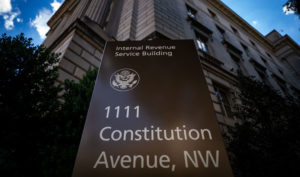
Changes should be made to better reflect underlying scientific models.
When the Department of Energy (DOE) issued a rule to improve the energy efficiency of microwave ovens earlier this year, it relied on benefits associated with reduced carbon pollution in justifying its new standards. Although this is a common practice, this rulemaking was notably different because the agency changed the methodology—the Social Cost of Carbon (SCC) metric —used to determine the benefits from reducing greenhouse gases.
The SCC was first developed in 2010 by a task force of twelve U.S. agencies including the Environmental Protection Agency (EPA), DOE, and the National Economic Council, among others. These agencies developed the SCC metric to standardize how federal agencies quantify the benefits of reduced carbon pollution. The task force used three separate climate models— the FUND, DICE, and PAGE models—to provide a range of annual costs per ton of greenhouse gas emissions. These cost ranges then were used to form the basis of a standard SCC metric used in economic analyses across the federal bureaucracy.
While justifying the microwave oven rule, the DOE revised the SCC, and unveiled a new social cost of $36 per ton of carbon, as opposed to the previous $22 per ton value that was produced by the task force in 2010. This change sparked significant controversy. The Washington Post reported the story, portraying the change as a dramatic shift in policy by the Obama administration in favor of environmental interests. The Obama administration’s announcement earlier this summer of a focus on climate policy would seem to confirm this portrayal.
But should the change in the SCC be considered just a political move by the Obama administration to promote environmental goals? We think not. The change was supported by new scientific and economic analysis. Indeed, it would have been irresponsible not to have adjusted the SCC.
In its microwave oven rule, the DOE argued that the 2013 White House Economic Report called for agencies to revise the SCC in order to reflect new scientific information on the impacts of climate change on the environment and public health. Thus, the agency argued that it was only following necessary procedures when it updated the SCC to reflect new information.
To put this into perspective, after the task force initially unveiled the SCC almost four years ago, it was never updated until the DOE’s microwave rulemaking. However, climate change science is a dynamic and evolving field, and the models used to produce the SCC have changed over time to more adequately reflect costs and impacts. For example, the FUND model has been updated three times since 2010. Moreover, recent work by Michael Greenstone, Elizabeth Kopitsy, and Ann Wolverton notes that the models are likely to continue to change in order to more effectively convert physical damages into economic damages. Therefore, as more research is conducted, assumptions and numerical values change to reflect new information.
The controversy in the popular press surrounding the SCC has focused solely on how much the accepted social cost of carbon emissions has increased and the avenue in which that change was made. The press has generally neglected to mention the fact that federal agencies have not updated the SCC in nearly four years. Put differently, without the change, federal agencies like the DOE would have been using outdated information to determine climate impacts, calling into question the accuracy of the cost-benefit analyses that accompany regulatory actions.
Both pro-industry and environmental groups should welcome the DOE’s updated version of the SCC because it represents a more robust metric to determine emission reduction benefits based upon the most current information available. In addition, these groups should advocate that these numbers be updated with each rulemaking in order to reflect improvements in the underlying models. This is especially important because the economic analysis of rules is a critical component of the regulatory process. If these cost-benefit analyses are inaccurate, it can skew an agency towards an inefficient outcome—potentially harming both the economy and the environment.
The recent change in the SCC should not be considered merely a political ploy to stack the deck in favor of environmentalists. Rather, it should be regarded as a commonsense and scientific imperative to assure that essential economic analyses are accurate.




